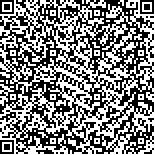谭永霞,李玲,陈景藻.次声对大鼠学习记忆行为及海马和颞叶皮层Ryanodine受体的影响[J].中华物理医学与康复杂志,2004,(5):
扫码阅读全文

|
| 次声对大鼠学习记忆行为及海马和颞叶皮层Ryanodine受体的影响 |
|
| |
| DOI: |
| 中文关键词: 次声 RyR 学习记忆 水迷宫 大鼠 |
| 英文关键词: Infrasound RyR Learning and memory Water maze training Rats |
| 基金项目:全军医学科学技术研究“十五”计划指令性课题(No.01L071) |
|
| 摘要点击次数: 2576 |
| 全文下载次数: 3326 |
| 中文摘要: |
| 目的探讨8 Hz次声对SD大鼠空间学习记忆行为的影响及其作用机制。 方法40只雄性SD大鼠随机分为正常对照组、90 dB、100 dB及130 dB组。各试验组分别暴露于8 Hz次声的90 dB、100 dB或130 dB次声舱中;对照组每日置次声舱,但不给予次声作用。2组均每天2 h。大鼠每日从次声舱中取出后进行Morris水迷宫训练,记录其找到隐匿站台的时间,第6天训练结束后立即取大脑组织,并进行免疫组织化学染色,光学显微镜下分析其海马及颞叶皮层Ryanodine受体(RyR)含量的变化。 结果90 dB、100 dB及130 dB组大鼠在水迷宫中找到隐匿站台的时间均比对照组延长(P=0.010,0.001,0.000)。90 dB、100 dB及130 dB组大鼠海马及颞叶皮层RyR含量均比对照组减少(均P=0.000)。大鼠在水迷宫中找到隐匿站台的时间与其海马及颞叶皮层RyR含量呈负相关。 结论90 dB、100 dB及130 dB次声可使大鼠空间学习记忆能力降低,其作用机制可能与海马及颞叶皮层RyR的减少有关。 |
| 英文摘要: |
| Objective To investigate the effects of 8Hz infrasound on spatial learning ability of rats and its the underlying mechanism. MethodsForty male SD rats were randomly divided into a control group and an experiment group (consisting of the 8Hz, 90dB, 100dB and 130dB subgroups). The experimental subgroups were exposed to 8Hz, 90dB, 100dB or 130dB infrasound for 2 hours daily, respectively, for a total of 6 days. All of the rats were taken out of the infrasonic depot once a day and given Morris maze training. And at last the brain of the rats were harvested and treated with immunohistochemical staining for detection of ryanodine receptor (RyR). The content of RyR in hippocampi and temporal cortex were detected under an optical microscope. ResultsThe rats in the 8Hz, 90dB, 100dB and 130dB subgroups showed prolonged latency in Morris training (P=0.010,P=0.001 and P=0.000). The hippocampi and temporal cortex of rats in 8Hz, 90dB, 100dB and 130dB subgroups showed less positive neurons of RyR (P=0.000). There was a negative correlation between the latency period of rats finding the hidden platform and the content of RyR in hippocampus and temporal cortex. ConclusionInfrasound of 8Hz, 90dB, 100dB and 130dB could decrease the spatial learning ability of rats, and this was possibly related to the reduce of RyR in hippocampus and temporal cortex. |
|
查看全文
查看/发表评论 下载PDF阅读器 |
| 关闭 |
|
|
|